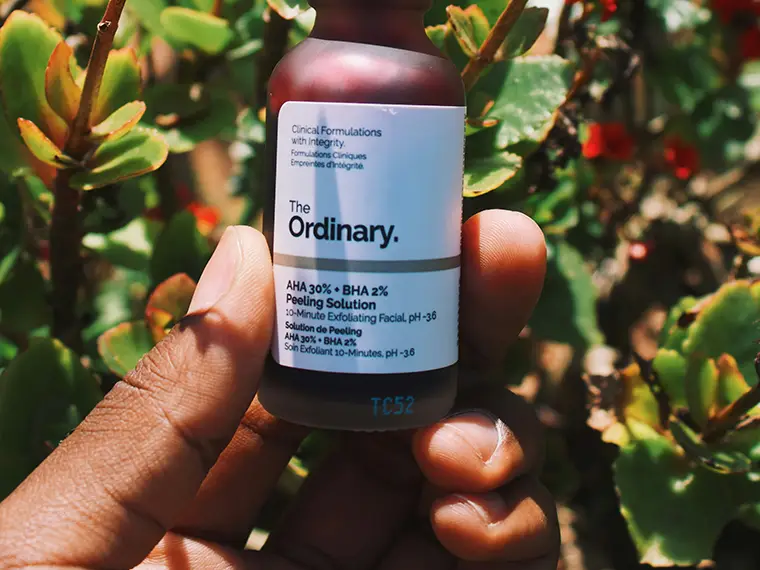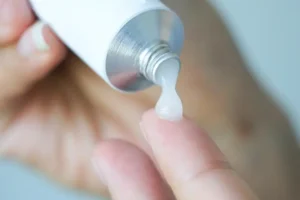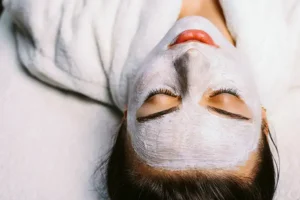What Are AHA and BHA?
AHA (alpha-hydroxy acids) and BHA (beta-hydroxy acids) are popular chemical exfoliants in skincare. The primary distinction between the two is their molecular structure and their mechanisms of action on the skin. AHAs are water-soluble and work on the skin’s surface to exfoliate dead skin cells, making them ideal for dry or sun-damaged skin. In contrast, BHAs are oil-soluble, enabling them to penetrate deeply into the pores, which makes them particularly effective for oily and acne-prone skin.
AHA and BHA Acids: Full List
AHAs include glycolic acid, lactic acid, mandelic acid, malic acid, citric acid, and tartaric acid. Each of these acids targets different skin concerns:
- Glycolic Acid: Known for its small molecular size, it effectively exfoliates and improves skin texture.
- Lactic Acid: Gentler than glycolic acid, it’s great for sensitive skin and helps with hydration.
- Mandelic Acid: Suited for sensitive and acne-prone skin, offering mild exfoliation.
- Malic Acid: A larger molecule that provides gentle exfoliation and hydration.
- Citric Acid: Primarily used to balance the skin’s pH and provide antioxidant benefits.
- Tartaric Acid: Helps smooth the skin and stabilize the pH of other acids.
BHAs:
- Salicylic Acid: The most widely used BHA, recognized for its ability to penetrate pores and eliminate excess oil and debris, helping to reduce acne and blackheads.
- Salicylate, Sodium Salicylate, and Willow Extract: Related ingredients that provide similar benefits to salicylic acid, offering gentle exfoliation and anti-inflammatory properties.
- Beta Hydroxybutanoic Acid: A less common BHA variant, known for its exfoliating and pore-clearing capabilities.
- Tropic Acid: An organic acid known for its exfoliating benefits, but it is not as commonly utilized in skincare.
- Trethocanic Acid: Promotes exfoliation and is present in certain specialized skincare formulations.
When to Use AHA and BHA
Use AHA for surface exfoliation, targeting concerns like dry and sun-damaged skin, dullness, and pigmentation. BHA is better for oily and acne-prone skin, helping to unclog pores and reduce blackheads. Your skin’s type and issues determine how frequently it should be used. Start with 1-2 times a week, and gradually increase usage over time as your skin adjusts. Both AHA and BHA are generally recommended for evening use to minimize sun sensitivity.
Can You Use AHA and BHA Together?
Yes, they can be used together for multi-layered exfoliation; however, it’s important to introduce them slowly to prevent irritation. These acids complement each other by targeting different layers of the skin—AHA exfoliates the surface, while BHA penetrates deeper into the pores. You can layer them or alternate between them, depending on your skin’s tolerance.
Benefits of AHA and BHA
AHA Benefits: AHAs remove dead skin cells, boost cell turnover, fade pigmentation, smooth fine lines, and even skin texture.
BHA Benefits: BHAs penetrate pores to clear excess oil, reduce acne and blackheads, and calm inflammation. When used together, they improve skin texture and clarity, promoting a complexion that is luminous, even, and free of blemishes.
Side Effects of AHA and BHA
Common side effects include redness, irritation, dryness, and peeling, especially with overuse. Overusing these acids can disrupt the skin barrier. To minimize side effects, start with lower concentrations and always use sunscreen during the day.
Incorporating AHA and BHA into Your Skincare Routine
Start by patch-testing and gradually introducing acids into your routine. Apply them after cleansing and before moisturizing. Sensitive skin should limit usage to once per week. Oily and combination skin types can use them more frequently. Always apply a moisturizer afterward to ensure your skin stays hydrated.
Choosing the Right AHA or BHA Product for Your Skin
Choose an AHA or BHA product based on your specific skin concerns. Consider the concentration, formulation, and any additional active ingredients. For example, glycolic acid provides more intense exfoliation, penetrating deeper into the skin, while lactic acid offers a milder approach. For those with oily or acne-prone complexions, salicylic acid is typically the recommended option.
References:
www.ncbi.nlm.nih.gov
AcneAdvocate is a participant in the Amazon affiliate advertising program and this post may contain affiliate links, which means we may earn a commission or fees if you make a purchase via those links.





